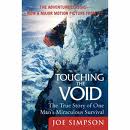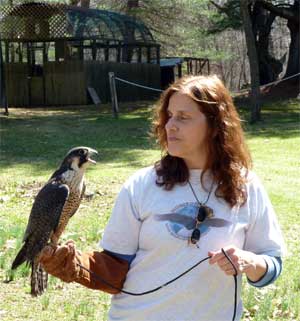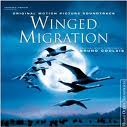never beat within a human breast"
- Lord Byron
1957-2010
With and Without
ABOUT Z FLIX
The Z FLIX film festival was the brainchild of, and sponsored by the Woodstock Historical Society. It was organized in honor of Doug Zimmerman, who was Program Chair for 8 years, and who also served as Vice President.
![]()
THE FIRST ZFLIX FILM FESTIVAL SERIES
HELD IN JULY 2010
If you missed these, you might want to watch them at home.
 Touching the Void
Touching the Void
- Interviews with realistic re-enactments tell the incredible true story of a mountaineering expedition in Peru. One climber falls and breaks his leg while climbing in the Andes. His companion, who is tethered to him, attempts to lower him to safety but fails, forcing him to make a pivotal decision that may or may not save both of their lives. The question is, was it the right one? Probably one of the best mountain climbing films ever made. 2003. 107 minutes. Strong language but no gore. Very intense. Brendan Mackey, Nicholas Aaron. Director Kevin MacDonald (Last King of Scotland.) R for language. Watch Trailer. See reviews by climbers.
-
Touching the Void Commentary - click here to readOne of my all time favorite mountaineering films. Much better than the crap you see in Vertical Limit or Cliffhanger (Doug despised both those films.)
The technical parts are very authentic. You really get a sense of what mountaineering is like.
You will see the beautiful vistas, feel the blowing wind, get thirsty when they suffer from dehydration, and feel the fear.
The movie is about a disastrous climb on the 20,813 foot Siula Grande mountain the Peruvian Andes. Most accidents happen on the way down, which is what occurred in this case. It is an incredible story of human character tested to its limits. You can't make this stuff up.
It is told in the climber's own words. No moralizing, No judgments. Just brutal honesty. They both admit to some things they thought and did that are not pretty.
Things to think about while you watch the film:
- What would you have done in Yates' situation? (Unless you have been there or done that, it is hard to say)
- How would you live with the decision Yates made? (See Living with guilt and thoughtworms)
- What would you do to survive? How would you maintain hope?
- Would you keep climbing after an experience like this? ( Both of these men continued to climb after this incident, although not together.)
The two principals - Joe Simpson (author of the equally good book of the same name) and Simon Yates were 25 and 20 at the time of the incident (1985.) They were climbing companions vs. great friends.
Both Simpson and Yates were involved in the filming. Simpson experienced some post traumatic stress after returning to the location. He happy with the resulting film. He wrote the book to vindicate Yates' decision, which he has always defended. Yates was roundly criticized by some in the climbing community.
Three parts really resonated for me. One was how Simspon set interim goals to make progress and survive. It makes you think anything is possible. Another was the ability to not be judgemental, which reminded me of Doug. And a third was what he went through. I thought if he could survive that, maybe I can survive a broken heart.
I also thought the earworm part (where a crummy song by Boney M gets stuck in Simpson's head) was interesting - you could feel how annoying it was. (I struggle with thoughtworms.) I actually felt sick during the part where he was hallucinating.
The film was shot mostly in the Peruvian Andes and some in the European Alps. Simpson and Yates and a third (non-climbing companion) Hawkins narrate the film. The climbing re-enactments are done by other actors.
By the way, their summit has not been repeated. Another group took a different, safer approach in 1999 and made it to the summit. They named the route "Avoiding the Touch."
I recommend that you read the book and watch the movie. It is an amazing, thought provoking story.

 PRECEEDED BY A LIVE RAPTOR SHOW! One half hour educational program with live raptors, courtesy of Horizon Wings wildlife rehabilitators of Ashford CT. They brought a Kestrel, Red-Tailed Hawk and an owl. See sample of shows they do. They are two amazing people - knowledgeable, dedicated, fascinating. They do programs for fairs, schools and even birthday parties. They charge a fee because they survive on donations (wildlife rehabbers do not get funding from the government), but it is DEFINITELY worth it!
PRECEEDED BY A LIVE RAPTOR SHOW! One half hour educational program with live raptors, courtesy of Horizon Wings wildlife rehabilitators of Ashford CT. They brought a Kestrel, Red-Tailed Hawk and an owl. See sample of shows they do. They are two amazing people - knowledgeable, dedicated, fascinating. They do programs for fairs, schools and even birthday parties. They charge a fee because they survive on donations (wildlife rehabbers do not get funding from the government), but it is DEFINITELY worth it!
 Walkabout
Walkabout
- An urbanite teenager and her young brother are abandoned in Australian Outback. The two must learn to cope with the harshness of the natural world. Along the way, they meet a young aborigine on his “walkabout,” a rite of passage in which adolescent boys are initiated into manhood by journeying into the wilderness alone. The movie is a memorable and hypnotic adventure, and a provocative rumination on time and civilization. Cast: Jenny Agutter, Lucien John and David Gulpilil. 1971. 1 hour 35 minutes. Unrated, but probably R or PG-13 due to several primitive style nude shots, corpses etc. Watch Trailer
-
Walkabout Commentary - click here to readThis was the first film in the Z Flix series. Due to the fact that there were children in the audience, it was a cringer. I had forgotten about rotting corpses and nakedness. I tried to explain that the death in the end was symbolic.
It was hard to hear dialogue with Australian accent. Captions would have helped.
It is a beautiful and thought provoking film. I saw it when I was about 13 and it stayed with me.
It is also pretty depressing. Guess I figured since I’m so blue, everyone else would want to wallow there too. After this one, folks suggested a nature film.
 Deep Blue
Deep Blue
- Shot in more than 200 locations across the globe, this extraordinary documentary narrated by Pierce Brosnan reveals the infinite variety of plant and animal life of the ocean's deepest depths and surrounding ecosystems. The film features breathtaking cinematography that captures the everyday drama of animals including killer whales, polar bears, birds, seals, crabs, fish and dozens of other fascinating creatures. 2006. 91 minutes. Rated G. Okay for kids 6+, but animals do attack each other. Watch Trailer
-
Deep Blue Commentary - The Making of - click here to readThe filmmakers had a purpose in mind – to engage people with the creatures of the ocean, which covers about 70% of our planet. They wanted the audience to see how spectacular and vulnerable they are – in the hopes that they will come to care more about protecting them.
You will see some really bizarre creatures - – including one that that inspired the creators of the movie Alien. Also some that had never been seen or filmed before.
More people have travelled in space than the deep sea – we know little about it. Nature films are notoriously difficult to film. They can’t be scripted. A lot goes wrong. They spend a lot of time waiting for something to happen.
At least on land, say if you want to say film animals in Africa, you hang out by a water hole. The ocean is a gargantuan blue desert – can’t find or control the creatures you want to film. The producers said this one was a nightmare to make.
The creators of Deep Blue talked with hundreds of scientists and attended many conferences to learn more about what they should and would film and to understand behaviors.
It took a team of 20 + 40 camera men filming in over 200 locations- 3000 days to film this extraordinary documentary. About 90% of the time, nothing happened or they couldn’t even find anything to film - one guy filmed for over 200 days and ended up with 5 minutes of useful footage.
One thing you would think would be easy to find would be a blue whale – largest creature on the planet, larger than any dinosaur that ever lived. Yet where they go to breed is still a mystery to us.
Literally on the last day of filming, they were filming a shoal (school) of mackerel. Striped marlin with big pointy javelins – at 70 mph – dangerous – because of lighting, cameraman have to get right in the middle of the action. While filming, an elusive 30 ton Sei whale suddenly rises up from the deep blue to join the feeding frenzy. You will see him blow up like a dirigible and eat half of the shoal in one gulp. The photographer said that if he had been 5-6 feet closer, he would have ended up in the whales mouth.
Deep Blue starts on the beach and then moves out into the open ocean, deep sea and frozen sea in Antarctica. Music plays a significant role in the film – carries and delivers the story, suspense and emotion and pace.
George Fenton composed the film score and the Berlin Philharmonic was the orchestra. Pay attention to the music in frozen Antarctica– he was trying to evoke deep winter, then the ice breaks up, the sun shines through and life returns

 Never Cry Wolf
Never Cry Wolf
- Carroll Ballard's adaptation of Farley Mowat's autobiographical novel follows Mowat (Charles Martin Smith) into the tundra, where he's supposed to study the harm that wolves inflict on the caribou herd but struggles to make it in the harsh surroundings. He comes to the conclusion that the caribous' worst enemies are not the wolves after all. Woodstock resident Brian Dennehy plays a grizzled bush pilot, who fixes his engine while flying the plane (pilots love that unrealistic but exciting scene.) Hiro Narita's cinematography is spectacular, and the evocative sound was nominated for an Academy Award. Rated PG. 1983. 105 minutes.
 Winged Migration
Winged Migration
- Presented with minimal narration and filmed primarily from a bird's perspective. An enthralling study of the lives and habits of migrating birds. Breathtaking cinematography and gorgeous music drive this Academy Award-nominated documentary, a thrilling visual adventure created by French filmmakers. Understated (not preachy) and inspiring. 2001. 89 minutes. Preceded by a Looney Tunes cartoon. Watch Trailer
 (Animals are) Beautiful People
(Animals are) Beautiful People
- An entertaining and humorous look at African wildlife from Jamie Uys, creator of The Gods Must Be Crazy. A family film filled with fascinating footage. It compares animals and humans -- and finds much in common between the two. Filmed over four years in the Namib and Kalahari deserts and the Okavango Delta region, the movie won Best Documentary at the Golden Globes in 1975. 92 minutes. Preceded by a Looney Tunes cartoon. Watch Trailer
-
Commentary - click to readThis was the last movie Doug and I watched together. We both enjoyed the photography and dry humor. Most animal documentaries are pretty serious – this one is amusing.
It shows the individuality, intelligence and adaptability of animals living in a very harsh climate. It does do a bit of anthropormorphizing – which is suggesting that animals have intentions and emotions that we normally attribute to humans. An example is the rabbit in Alice in Wonderland that worries about being late.
It took four years to film this movie, which takes place in the Namib Desert of South Africa. The creators later went on to make The Gods Must be Crazy, about a tribe of bushmen who worship a coke bottle that falls out of a plane.
There are no maggot covered rotting corpses in this film. There is one sad part where some baby pelicans are stranded when the water dries up. This is just an example of what a challenge survival in the wild can be.
It features fun use of sound effects and music. Trepak" and "Waltz of the Flowers" from Tchaikowsky's *Nutcracker Suite*, "Clair De Lune" and "Sunrise" from Grieg's Peer Gynt Suite.

![]()
OTHER POSSIBILITIES FOR FUTURE ZFLIX
- North Face. In 1936, young German climbers Toni Kurz (Benno Fürmann) and Andreas Hinterstoisser (Florian Lukas) face off against a rival Austrian duo in an attempt to be the first team to scale the infamous north face of the Eiger in the Swiss Alps. As the men make the treacherous climb, journalist Luise (Johanna Wokalek) -- Toni's childhood love -- covers the biggest story of her career. Philipp Stölzl helms this drama based on a true story. Subtitles. 2008. 121 minutes
- 180 degree South: Conquerors of the Useless. Documentary inspired by pioneering outdoorsman Yvon Chouinard's freewheeling 1968 van trip to Patagonia, South America, a band of bliss-seeking surfer-mountaineers sets out -- in 2007, by boat -- to remake the journey in this adventure documentary. Jeff Johnson and his buddies hug the coast, stopping at the Galapagos Islands and Easter Island before arriving in Patagonia -- a region that's still breathtaking but is now besieged by environmental threats. 2010. 85 minutes.

- Alive. The enthralling true story of a rugby team whose plane crashes in the Andes. In an epic struggle to survive, the athletes and their companions are stranded on a barren glacier with little food or supplies. Over time, the survivors were forced to feed on their dead teammates to stay alive. Eventually, three men set off on a last-ditch journey to find help. Cast: Ethan Hawke and Josh Hamilton. 1993. 126 minutes. R for crash scene. Probably a little too grim.
- The Other Side of the Mountain. Based on the true story of Jill Kinmont. Kinmont was an 18 year old alpine racer, and a top prospect for an Olympic medal. A skiing accident left her a quadriplegic. With courage, determination, and the help of those around her, she fights her way beyond her disability. Marilyn Hasset won a Golden Globe. Beau Bridges also stars. 1976. 101 minutes. PG. Probably too dated and sappy.
LINK
Web hosting: WebhostingCheapskate.com lists the most recent web hosting coupons, discounts and promotional offers, as well as web hosting reviews for the top web hosting companies. If you’re new to web hosting, they recommend you start with either the web hosting primer at Web Hosting 101, or our article on how to find the best web host.
©2010. Designed by Chimalis LLC.
Please request permission before re-publishing content from this website, except for content on the quotes/poems page. This website is not intended as a substitute for the medical advice of physicians. The reader should regularly consult a physician in matters relating to his/her health and particularly with respect to any symptoms that may require diagnosis or medical attention. The author shall have neither liability nor responsibility to any person or entity with respect to any loss, damage or disruption caused, or alleged to have been caused, directly or indirectly, by any information contained on this website.